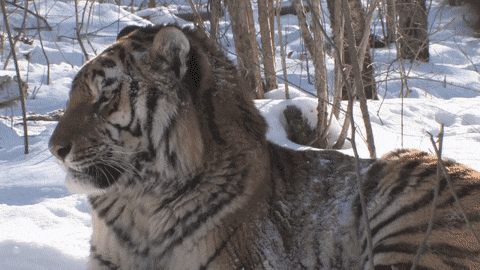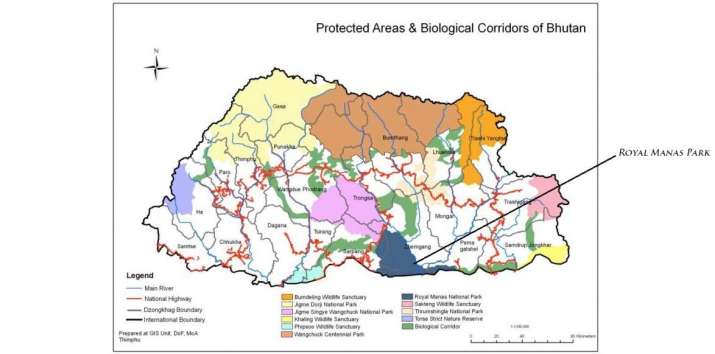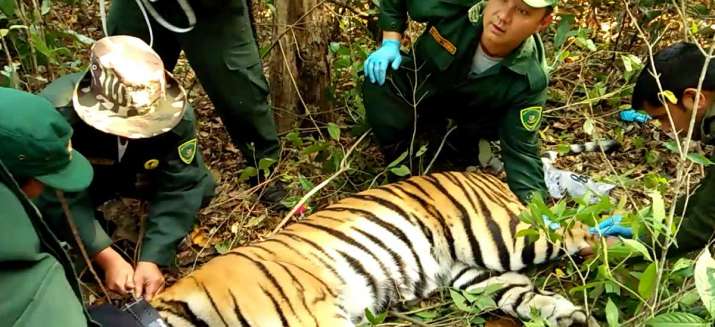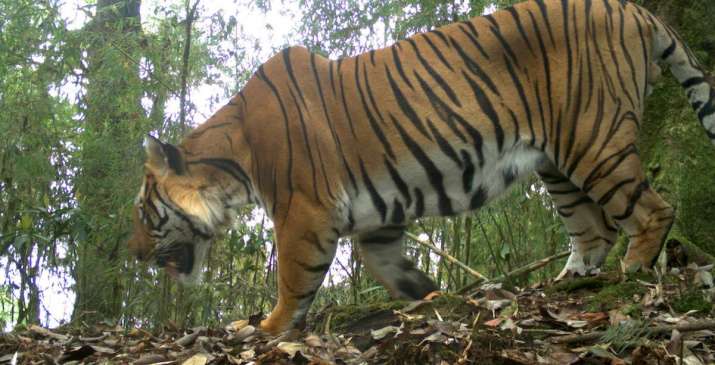NEWS
Bhutan Tiger Center Set to Open New Conservation Center in August

Renowned for prioritizing Gross National Happiness over the profit-driven acquisitiveness of unrestrained capitalism, the Buddhist kingdom of Bhutan, nestled high in the rarified air of the eastern Himalaya, is also making strides in the field of wildlife conservation, with particular emphasis on endangered wild tigers. Continuing this essential work, the Bhutan Tiger Center has announced that it will open its second conservation and research center in Bhutan’s oldest nature reserve, the Royal Manas National Park later this month.
“The building is complete, staff are ready to move, and new research is being outlined,” the Bhutan Foundation, which works closely with the the Bhutan Tiger Center, shared on Friday. “With the support from the Royal Government of Bhutan and other donor agencies, the new center with staff quarters was completed early this year and is ready to open this August for about 25 staff and their families.”
There are a total of 13 remianing tiger range countries—nations that are home to natural tiger habitats: Bangladesh, Bhutan, Cambodia, China, India, Indonesia, Laos, Malaysia, Myanmar, Nepal, Russia, Thailand, and Vietnam. According to the World Wide Fund for Nature (WWF),* however, studies have shown that despite recent success in improving tiger numbers, declines in protected areas remain a major risk—in particular due to habitat loss and the poaching of tigers for bush meat, trophies, traditional medicines, and other illegal activities.
 From littlebhutan.com
From littlebhutan.com“The wild tiger population has lost more than 93 per cent of its habitat in just the past 20 years,” the Bhutan Foundation explained. “Today, the species is classified as endangered with fewer than 3,200 left in the wild. Bhutan represents one of the few nations where native tiger populations are currently thriving due to strict protections on habitats and wildlife corridors, but with cross-border migration, poaching dangers, and retaliatory killings still a major issue worldwide, the fight isn’t over yet.” (Bhutan Foundation)
In 2015, Bhutan’s wild tiger population was estimated at 103 individuals. Evidence gathered by conservationists indicates that the population of tigers is slowly growing in the Himalayan kingdom, with new tiger photographs and footprints recorded in different parts of the country pointing to an overall increase in numbers. The Royal Manas National Park has recorded 64 tigers in recent years through camera trap surveys, with about 26 sightings believed to be trans-border in nature.
“Recognizing the importance of protecting this key species and of understanding its biology, the Bhutan Foundation has been working for decades with the Bhutan Tiger Center,” the Bhutan Foundation remarked. “The long-term partnership initiative with the Bhutan Tiger Center focuses on building a sound scientific knowledge base to guide the tiger conservation program in Bhutan through regular monitoring of tiger movement ecology and tiger population in the wild, their habitat uses, and their prey, with the hope that this will provide essential information in both protecting human settlements as well as planning a successful conservation program to save the tigers in the forests of Bhutan.” (Bhutan Foundation)
 From bhutanfound.org
From bhutanfound.orgTiger conservation can also be considered a barometer for the health of the larger ecosystem as a healthy tiger population helps to keep a natural check on herbivore numbers. According to Bhutan Tiger Center program director Tshering Tempa, Bhutan’s extensive forest cover could comfortably support 200–250 tigers. Worldwide, an estimated 2,154–3,159 mature individuals tigers remain in the wild—a number that continues to decline, despite ongoing efforts to conserve habitats and combat poaching.
Coinciding with International Tiger Day on 29 July, which is observed to promote a global system for protecting the natural tiger habitats and to raise awareness of tiger conservation issues, the Bhutan Tiger Center, under the Department of Forests and Park Services of the Royal Government of Bhutan, also announced the launch of Bhutan’s second nationwide tiger population survey.
“In fact, this is a huge for the department, for our ministry, for our government because we have made a commitment that we will have a figure or number to report for the next Global Tiger Summit scheduled for November next year [2022].” Dr. Tshering Tempa from the Bhutan Tiger Center. “So Bhutan will have a new figure for our country to report. And geared toward that, today we launched our national tiger survey, so that’s huge.” (YouTube)
A tiny Vajrayana Buddhist nation with a population of fewer than 800,000 people, Bhutan is no stranger to the concept of responsible environmental stewardship that accompanies its conservative approach to economic development: it is renowned as one of the Earth’s rare but essential carbon sinks. The kingdom has taken on a key role in tiger conservation and is taking strides to ensure tiger safety and to encourage natural breeding in a region where poaching and the illegal wildlife trade are rife.
In 2019, the deputy chief forestry officer for the Royal Manas National Park, Sithup Lhendup, observed that although it is difficult to ascertain whether the recorded growth in tiger numbers has been due to migration or new births, recent observations indicate an approximate 50:50 split. Future data analyses of demographics and population dynamics are expected to give a clearer picture.
“As we near the target year 2022 [to double the global tiger population], it is time to reflect on how close we are in achieving the goal,” WWF country director Dechen Dorji observed at the time. “It also ensures our collective efforts toward tiger conservation.” (Kuensel)
 From bhutanfound.org
From bhutanfound.orgRemote, landlocked, and sandwiched between two political and economic heavy-hitters India and China, Bhutan is the world’s last remaining Vajrayana Buddhist country. The ancient spiritual tradition is embedded in the very consciousness and culture of this remote land, where it has flourished with an unbroken history that dates back to its introduction from Tibet by Padmasambhava, also known as Guru Rinpoche, in the eighth century.
Most Bhutanese—about 75 per cent of a population of some 770,000 people—are Buddhists. The majority of the remaining 25 per cent, mainly people of the Lhotshampa ethnic group of Nepalese descent, practice Hinduism. Most of Bhutan’s Buddhists follow either the Drukpa Kagyu or the Nyingma schools of Vajrayana Buddhism.
* Formerly the World Wildlife Fund, although the name is still used in the US and Canada.
See more
Bhutan Foundation
Bhutan Tiger Center (Facebook)
Tiger Talks: Stories of Hope from Big Cat Conservationists in Bhutan (YouTube)
Tiger (IUCN Red List of Threatened Species)
WWF Bhutan
Restoring ecosystems and tiger populations in Bhutan (UNEP)
Tiger conservation efforts recognised (Kuensel)
Related news reports from Buddhistdoor Global
Bhutan Wins Recognition for Tiger Conservation Efforts
Rare Wild Tiger Caught On Camera in Bhutan
Study: Himalayan Conservation Zones Could Offer Hope for Endangered Tiger Populations
China Plans to Protect Tibetan Plateau Ecosystems with New National Park
Conservationists Report First Sighting of Snow Leopards in Eastern Tibet
New Report Shows Snow Leopards Under Grave Threat from Poaching
Related features from Buddhistdoor Global
Happiness Before Profit: Bhutan Seeks to Redefine Business Using Buddhist Values
Wildlife on the Brink
Halting the Economics of Extinction: How a Spiritual Resurgence in China Could Save the Biosphere














